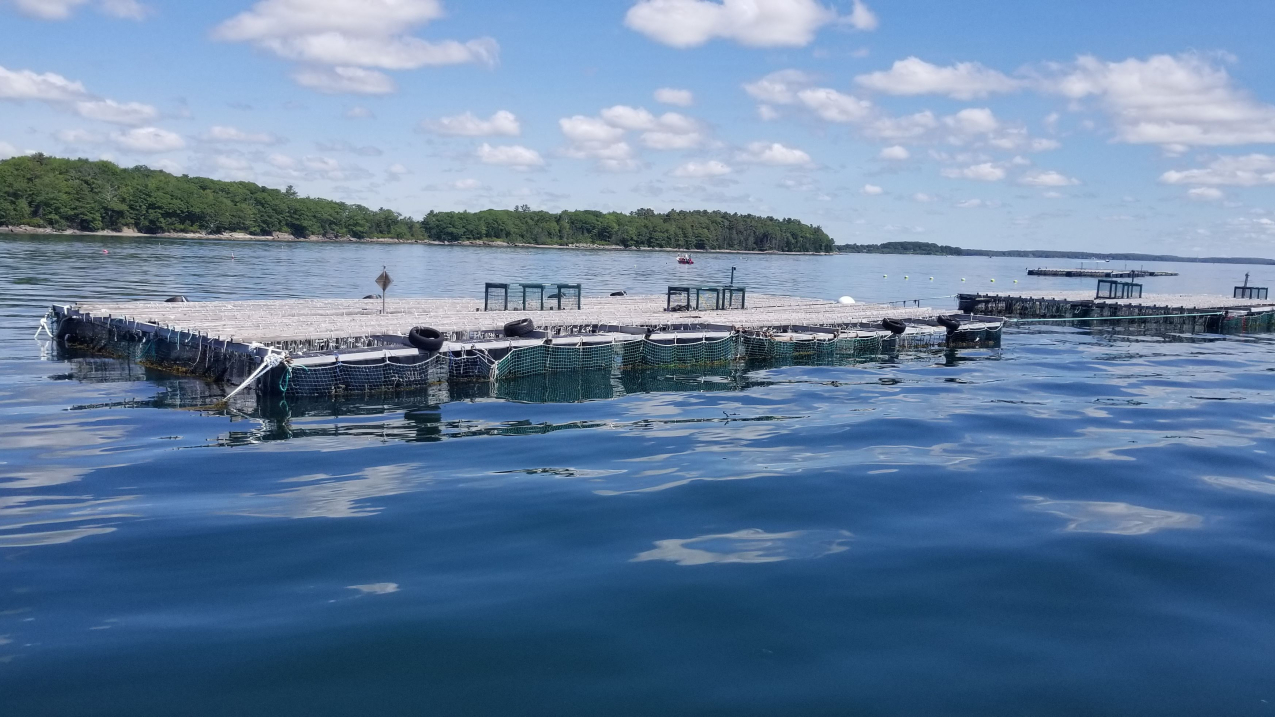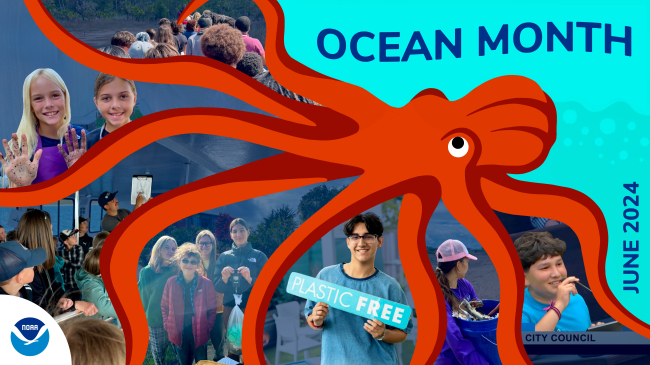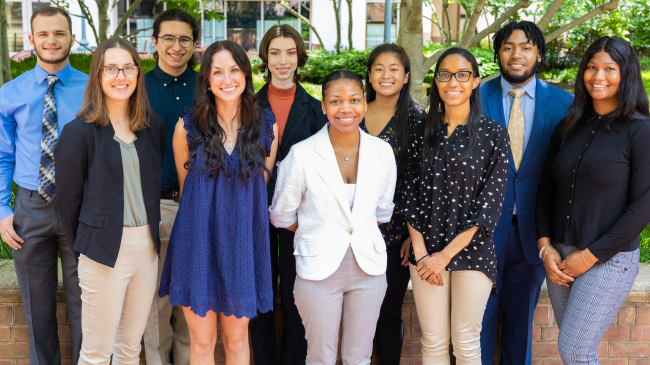Aquaculture means different things to different people, whether they’re in a different region or even sitting right next to each other! For some it may conjure up images of coastal communities harvesting clams and oysters in the summer or selecting seafood at the market, for others it speaks of cultural traditions and tribal practices, while some people connect the term with negative environmental impacts.

An oyster farm off the coast of Maine (Image credit: Sam Chan, Oregon Sea Grant)
While none of these are wrong ways of understanding aquaculture, there is widespread misunderstanding of how complex the topic can be. Technically, aquaculture is the breeding, rearing, and harvesting of fish, shellfish, algae, and other aquatic organisms, and encompasses many different cultural practices, environmental topics, and industries.
To address this need, the North American Association for Environmental Education offsite link (NAAEE) and NOAA are offering eeBLUE Aquaculture Literacy Mini-Grants offsite link, which will fund projects that identify and support innovative ways to engage a target audience with discussions about aquaculture topics. These mini-grants will pair environmental educators, aquaculture researchers, and the “boots on the ground” farmers to work towards a common vision: a society that understands aquaculture and its related environmental topics, informed by each sector’s unique perspectives.

In a blog post originally published by NAAEE offsite link, Brianna Shaughnessy, NOAA’s Aquaculture Education Coordinator, walks through what aquaculture literacy is, why we need it, and how educational projects have the potential to meet the needs of aquariums, industry groups, and the public.
More than 50% of seafood produced globally for human consumption comes from aquaculture, and that percentage is rising. Yet, there are still many misperceptions about aquaculture’s potential environmental impacts, quality, and safety, and there is high variability in community-specific needs to reach sustainable practices. Evidence shows that public support for aquaculture is associated with collective knowledge about its benefits and risks, trust in scientific research, and perceived credibility of the sources providing them with information. In the United States, public audiences’ limited understanding of base-level information about aquaculture and related environmental topics influences how communities understand, support, and make decisions about seafood. Connecting at the local-level and empowering industry voice is crucial in sharing the compelling stories of each aquaculture community and their unique needs.
The term ‘aquaculture’ encompasses a diversity of marine and aquatic farming industries, cultural practices, and environmental topics. Overall, aquaculture operations provide a year-round source of high-quality jobs and economic opportunities in coastal communities that can augment seasonal tourism and commercial fishing. Consumer and community understanding of aquaculture topics is key to achieving the full economic, social, and environmental potential of sustainable seafood farming. That is why, since 2017, experts from across NOAA worked closely with the Coastal Ecosystem Learning Centers (CELC) Network, a consortium of 25 aquariums and marine science education centers across North America, on an initiative aimed at improving public aquaculture literacy.
Aquaculture literacy within a community is generated by a familiarity with base-level information about aquaculture and, in turn, encourages consumers to confidently take ownership of their aquaculture-related decisions. Success begins at the level of community engagement and requires thoughtful implementation of best practices in environmental education. This is where NOAA’s eeBLUE partnership with the North American Association of Environmental Education (NAAEE) comes in, a 5-year partnership in place to increase environmental and science literacy among NOAA’s partners and external networks.
Now, aquariums, seafood farmers, and others working on innovative public aquaculture education experiences can apply for support through the new eeBLUE Aquaculture Literacy Mini-Grants Program offsite link. Applicants may apply for up to $15,000 to spend within a one-year project that builds a partnership across each sector.
Successful proposals will leverage NOAA and NAAEE resources to:
- Bring aquaculture education programming to institutions and/or target audiences currently lacking resources;
- Build the capacity of environmental education providers to offer high-quality programming in informal and formal settings by matching aquaculture communication needs with existing research; and;
- Develop creative approaches for public engagement that promote a culture that values innovation, exploration, and community-relevant learning as a context for improving public aquaculture literacy.
These mini-grants are one part of an ongoing effort by NOAA’s Community of Practice for Aquaculture Literacy (CoPAL). CoPAL’s goal is to enhance support for sustainable aquaculture by increasing understanding of environmental and marine science topics among educators, professional networks, and groups involved in community outreach. In addition to forging lasting partnerships, the collective knowledge, skills, and products created through funded mini-grant activities will be integrated into CoPAL’s best practices for aquaculture communications and outreach. As Chris Schillaci, Regional Aquaculture Coordinator for the NOAA Greater Atlantic Regional Fisheries Office, points out: "Collaborative efforts like eeBLUE are critical for NOAA Fisheries to provide effective stakeholder engagement, education, and outreach, and to engage our stakeholders on important policy issues. Disseminating complex scientific information in a manner that empowers stakeholders to participate in the decision-making process helps us all make more informed choices."




